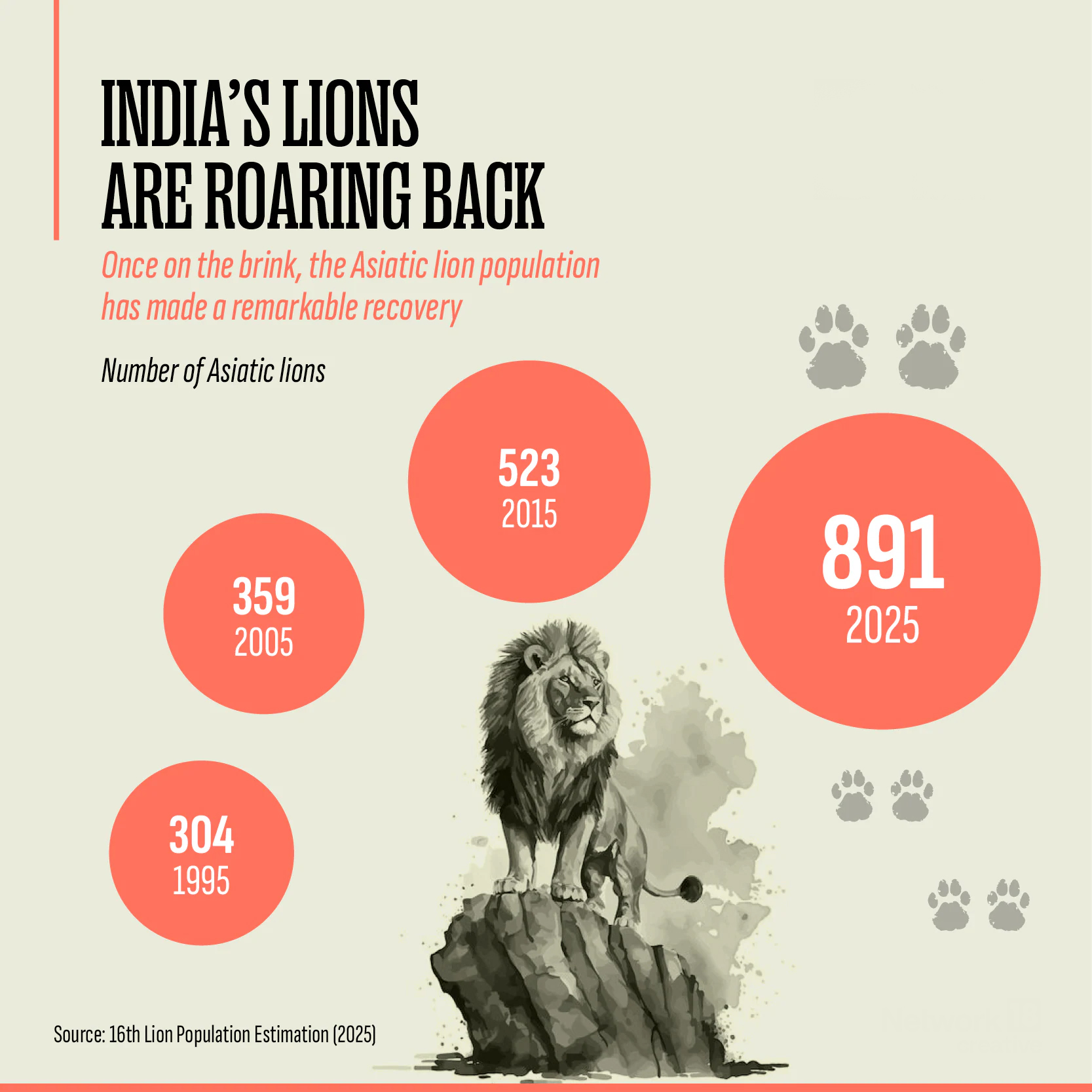Context:
The population of Asiatic lions (Panthera leo persica) in Gujarat has grown significantly, rising by 32% between 2020 and 2025, according to the Gujarat Forest Department’s latest report released on May 21, 2025. The total count now stands at 891 individuals, with a notable 27% increase in adult females, totaling 330—an important indicator for future population growth.
Geographic Distribution and Conservation Zones:
The Gir National Park and Paniya Wildlife Sanctuary remain the primary conservation hubs, housing 394 lions. The 2025 survey highlights:
· A majority of the lion population now resides outside core protected areas, spreading into satellite regions and human-dominated landscapes.
· Notable satellite populations have been recorded in Barda Wildlife Sanctuary, Jetpur, Babra-Jasdan, and newly documented corridor zones with 22 individuals. In total, 497 lions now inhabit nine satellite zones, reflecting an increasingly dispersed population.
· Mityala Wildlife Sanctuary, in particular, has witnessed a doubling of its lion population—from 16 in 2020 to 32 in 2025.

Range Expansion and Habitat Utilization:
The territorial spread of lions has grown by 36.4% from 2015 to 2020, reaching 30,000 sq. km. By 2025, it further expanded to 35,000 sq. km, marking a 16.67% increase in just five years. This trend illustrates successful natural dispersal and the efficacy of ongoing conservation efforts, albeit with complex ecological and social consequences.
Challenges:
The expansion into non-protected areas has brought lions into closer contact with human settlements, raising concerns over rising human-wildlife conflict.
A 2024 study in Conservation Biology found an annual 10% increase in the number of villages reporting livestock predation, and a 15% annual rise in livestock killed per village.
Despite this, 61% of local communities expressed tolerance toward lions—highlighting a fragile but enduring human-carnivore coexistence.
About Project Lion:
Project Lion, launched in 2020, is a long-term conservation initiative focused on securing the future of Asiatic lions in Gujarat’s Gir landscape. It aims to enhance habitat quality, reduce human-wildlife conflict, and improve ecosystem health.
· The Gujarat Forest Department leads the project, using advanced technologies like radio-collaring, camera traps, and GPS tracking for lion monitoring.
· An automated sensor grid with magnetic, movement, and infrared sensors supports surveillance, while GIS-based real-time monitoring enables data-driven management.
· Regular lion censuses further inform conservation strategies, ensuring the protection and sustainable management of India’s only wild lion population.
Conclusion:
The growth of the Asiatic lion population is a testament to Gujarat’s robust conservation framework. However, it also underscores the urgent need for strategic expansion, conflict mitigation, and decentralization of lion habitats. Balancing ecological sustainability with community welfare remains the key challenge for India’s flagship carnivore conservation program.






